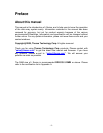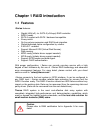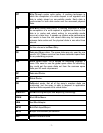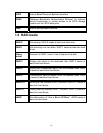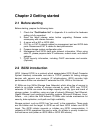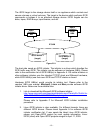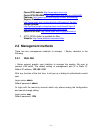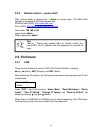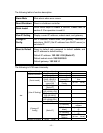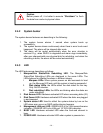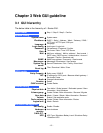Chapter 2 Getting started
2.1 Before starting
Before starting, prepare the following items.
1. Check the “Certification list” in Appendix A to confirm the hardware
setting is fully supported.
2. Read the latest release notes before upgrading. Release notes
accompany with release firmware.
3. A server with a NIC or iSCSI HBA.
4. CAT 5e, or CAT 6 network cables for management port and iSCSI data
ports. Recommend CAT 6 cables for best performance.
5. Prepare storage system configuration plan.
6. Management and iSCSI data ports network information. When using
static IP, please prepare static IP addresses, subnet mask, and default
gateway.
7. CHAP security information, including CHAP usernames and secrets.
(Optional)
2.2 iSCSI introduction
iSCSI (Internet SCSI) is a protocol which encapsulates SCSI (Small Computer
System Interface) commands and data in TCP/IP packets for linking storage
devices with servers over common IP infrastructures. iSCSI provides high
performance SANs over standard IP networks like LAN, WAN or the Internet.
IP SANs are true SANs (Storage Area Networks) which allow few of servers to
attach to an infinite number of storage volumes by using iSCSI over TCP/IP
networks. IP SANs can scale the storage capacity with any type and brand of
storage system. In addition, using any type of network (Ethernet, Fast Ethernet,
Gigabit Ethernet) and combining operating systems (Microsoft Windows, Linux,
Solaris, …etc.) within the SAN network. IP-SANs also include mechanisms for
security, data replication, multi-path and high availability.
Storage protocol, such as iSCSI, has “two ends” in the connection. These ends
are the initiator and the target. In iSCSI we call them iSCSI initiator and iSCSI
target. The iSCSI initiator requests or initiates any iSCSI communication. It
requests all SCSI operations like read or write. An initiator is usually located on
the host/server side (either an iSCSI HBA or iSCSI SW initiator).
- 9 -




